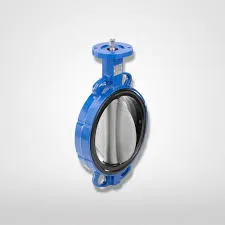Jan . 01, 2025 06:50 Back to list
Innovative Solutions in Cast Steel Valve Engineering and Design Techniques
Understanding Cast Steel Valves A Comprehensive Overview
Cast steel valves are essential components in a vast array of industrial applications, functioning as control devices for the flow of gases, liquids, and slurries. Their durability, strength, and versatility make them a preferred choice among engineers and designers throughout various sectors, including oil and gas, chemical processing, water treatment, and power generation.
What is Cast Steel?
Cast steel is an alloy primarily composed of iron, carbon, and varying amounts of other metals. The casting process involves pouring molten steel into a mold, where it solidifies into the desired shape. This method allows for the creation of intricate designs that would be challenging to achieve with other manufacturing processes. The resulting material is known for its excellent mechanical properties and resistance to wear and deformation, making it suitable for high-pressure and high-temperature applications.
Advantages of Cast Steel Valves
1. Strength and Durability One of the standout features of cast steel valves is their strength. They can withstand high-pressure environments and are resistant to corrosion and wear. This durability ensures a long operational life, reducing the need for frequent replacements and maintenance.
2. Versatility Cast steel valves are available in various designs including gate, globe, ball, and check valves, allowing them to be utilized in numerous applications. Each design serves different functions, such as regulating flow, preventing backflow, or providing shut-off capabilities.
3. Performance Under Extreme Conditions These valves perform well under extreme temperatures and pressures, making them suitable for applications in the oil and gas industry, as well as in thermal power plants where high-performance standards are crucial.
4. Ease of Manufacturing The casting process allows mass production without compromising on quality. It is easier to manufacture complex geometries and large components, which can be a significant advantage for large-scale industrial operations.
5. Cost-Effectiveness While cast steel valves might have a higher initial cost than some alternatives, their longevity and reliability can lead to substantial savings over time. Reduced maintenance and replacement costs can offset the purchase price, making them a worthwhile investment.
Types of Cast Steel Valves
- Gate Valves These valves are primarily used for on/off control with minimal pressure drop
. They are ideal for high-flow applications and provide a tight seal when closed.cast steel valve

- Globe Valves Designed for throttling and flow regulation, globe valves feature a spherical body and are effective in controlling fluid flow with lower resistance.
- Ball Valves Offering excellent sealing capabilities and quick operation, ball valves use a hollow, perforated, and pivoting ball to control flow. They are commonly used in pipeline applications.
- Check Valves These automatically prevent backflow in pipelines without requiring manual intervention. They are critical in preventing damage to pumps and other equipment within a system.
Applications of Cast Steel Valves
The application of cast steel valves spans multiple industries
- Oil and Gas In this sector, valves are essential for controlling the flow of crude oil, natural gas, and other related substances through pipelines and processing facilities.
- Chemical Processing Cast steel valves are utilized to handle a wide variety of chemicals safely and efficiently, minimizing leakage and ensuring operational safety.
- Water Treatment In water supply and treatment facilities, these valves help regulate water flow and maintain pressure throughout the system.
- Power Generation Power plants use cast steel valves for steam control and other critical functions where reliability is paramount.
Conclusion
Cast steel valves are a cornerstone of modern industrial systems. Their unique combination of strength, versatility, and durability allows them to perform effectively in demanding environments. As industries continue to evolve and adapt to new challenges, cast steel valves will undoubtedly remain a key component, driving efficiency and innovation. Understanding their features and applications equips engineers and decision-makers to select the right valve for their specific needs, ensuring reliable operations and optimal performance across various sectors.
Share